Complete Solutions to CBSE Scanner of chapter QUANTUM THEORY of Class 12 book with complete answers and questions
| Class 12 | PHYSICS |
| Chapter | QUANTUM THEORY |
| CHHAYA PRAKASHINI | CBSE Scanner |
| Number Of Questions | 29 |
| Academic Year | 2023-24 |
Define the terms (i) 'cut-off voltage' and (ii) 'threshold frequency' in relation to phenomenon of photoelecric effect.
Using Einstein's photoelectric equation show how the cutt-off voltage and threshold frequency for a given photosensitive material can be determined with the help of a suitable plot/graph.
View SolutionWrite the expression for the de Broglie wavelength associated with a charged particle having charge q and mass , when it is accelerated by a potential V.
View SolutionWrite Einstein's photoelectric equation and point out any two characterstic properties of photons on which this equation is based.
View SolutionAn electron microscope uses electrons, accelerated by a voltage of 50kV. Determine the de Broglie wavelength associated with the electrons. Taking other facters, such as numerical aperature etc. to same, how does the resolving power of an electron microscope compare with that of an optical microscope which uses yellow light.
View SolutionThe graph shows the variation of stopping potential with frequency of incident radiation for two photosensitive metal A and B. Which one of the two has higher value of work function? Justify your answer.
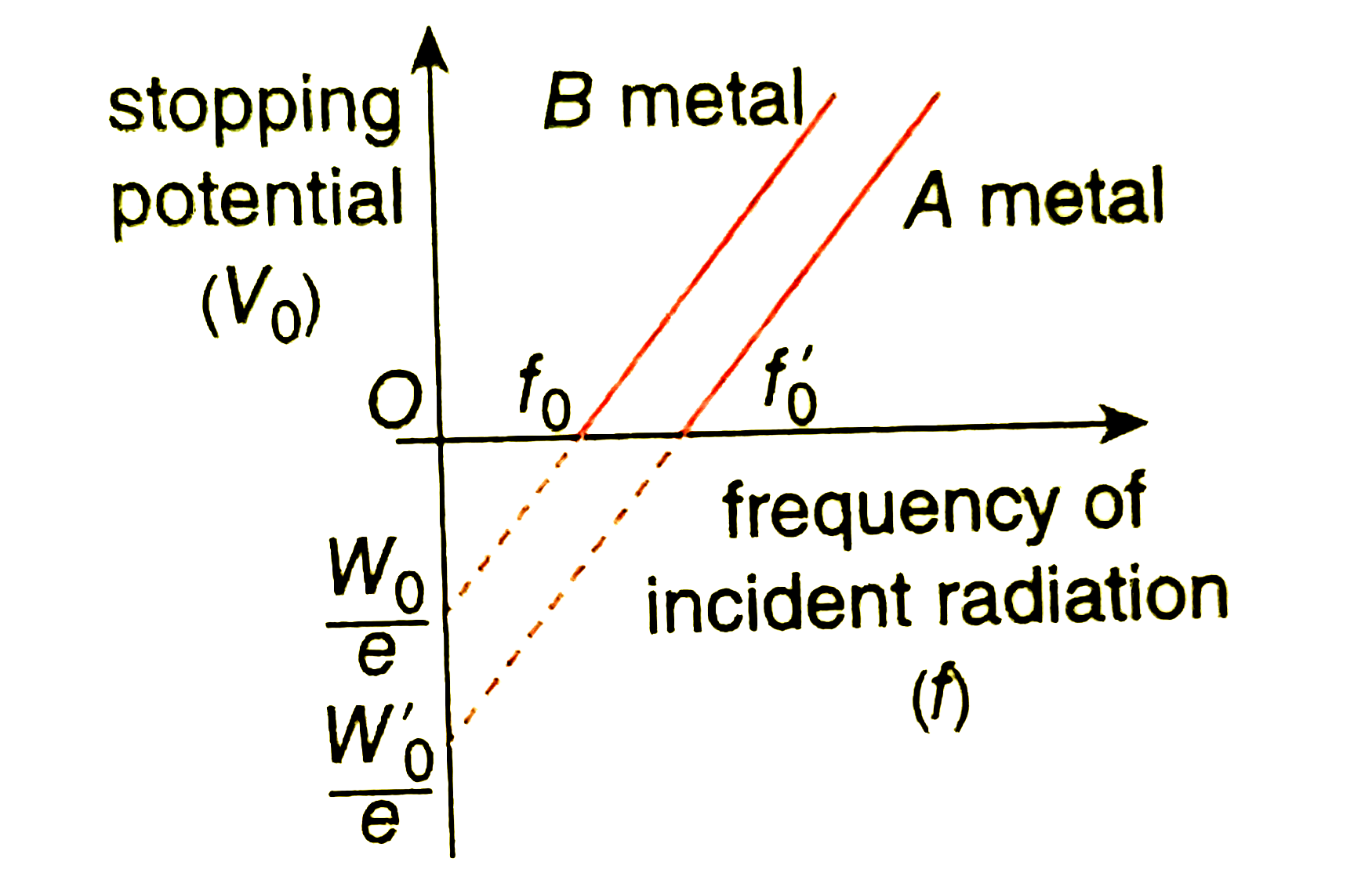
View SolutionDetermine the value of the de Broglie wavelength associated with the electron orbiting in the ground state of hydrogen atom ( given `E_(n) = - (13.6//n^(2))eV` and bohr radius `r^(0) = 0.53Å`). How will the de Broglie wavelength change when it is in the first excited state?
View SolutionDefine the term 'intensity of radiation in photon picture of light.
Ultraviolet light of wavelength `2270Å` from 100W mercury source irradiates a photo cell made of a given metal. If the stopping potential is -1.3V, estimate the work function of the metal. How would the photon cell respond to a high intensity `(~10^(5) W.m^(-2))` red light of wavelength `6300Å` produced by a laser?
View SolutionA proton and an `alpha`particle are accelerated through the same potential difference. Which one of the two has
greater de Broglie wavelength,
View SolutionA proton and an `alpha`particle are accelerated through the same potential difference. Which one of the two has
less kinetic energy? Justify your answer.
View SolutionState two important properties of photon which are used to write Einstein's photoelectric equation. Define (a) stopping potential and (b) threshold frequency, using Einstein's equation and drawing necessary plot between relevant quantities.
View SolutionIn the study of a photoelectric effect the graph between the stopping potential V and frequecy v of the incident radiation on two different metals P and Q shown in
Which one of the two metals has higher threshold frequency?
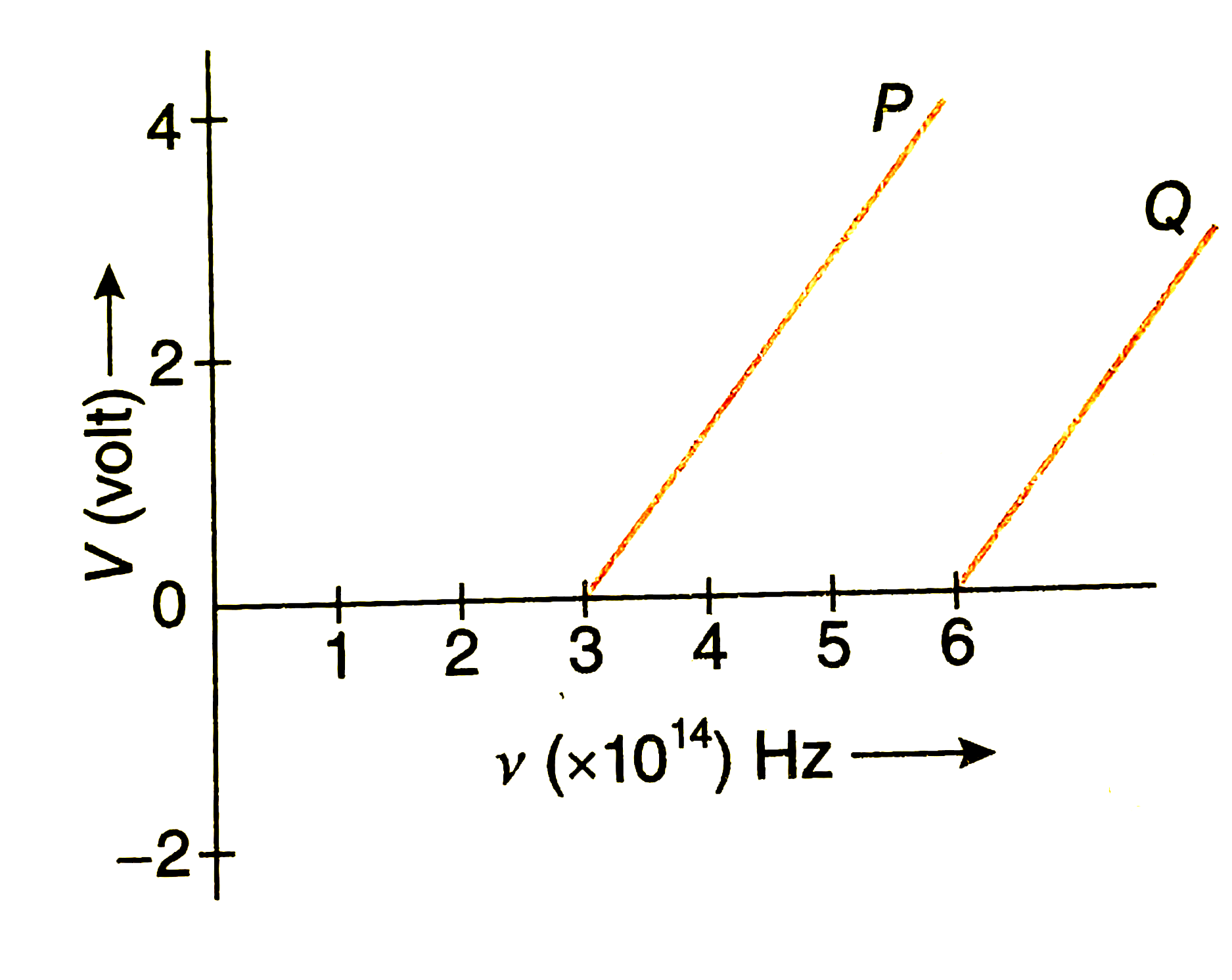
View SolutionIn the study of a photoelectric effect the graph between the stopping potential V and frequecy v of the incident radiation on two different metals P and Q shown in
(b) Determine the work function of the metal which has greater value.
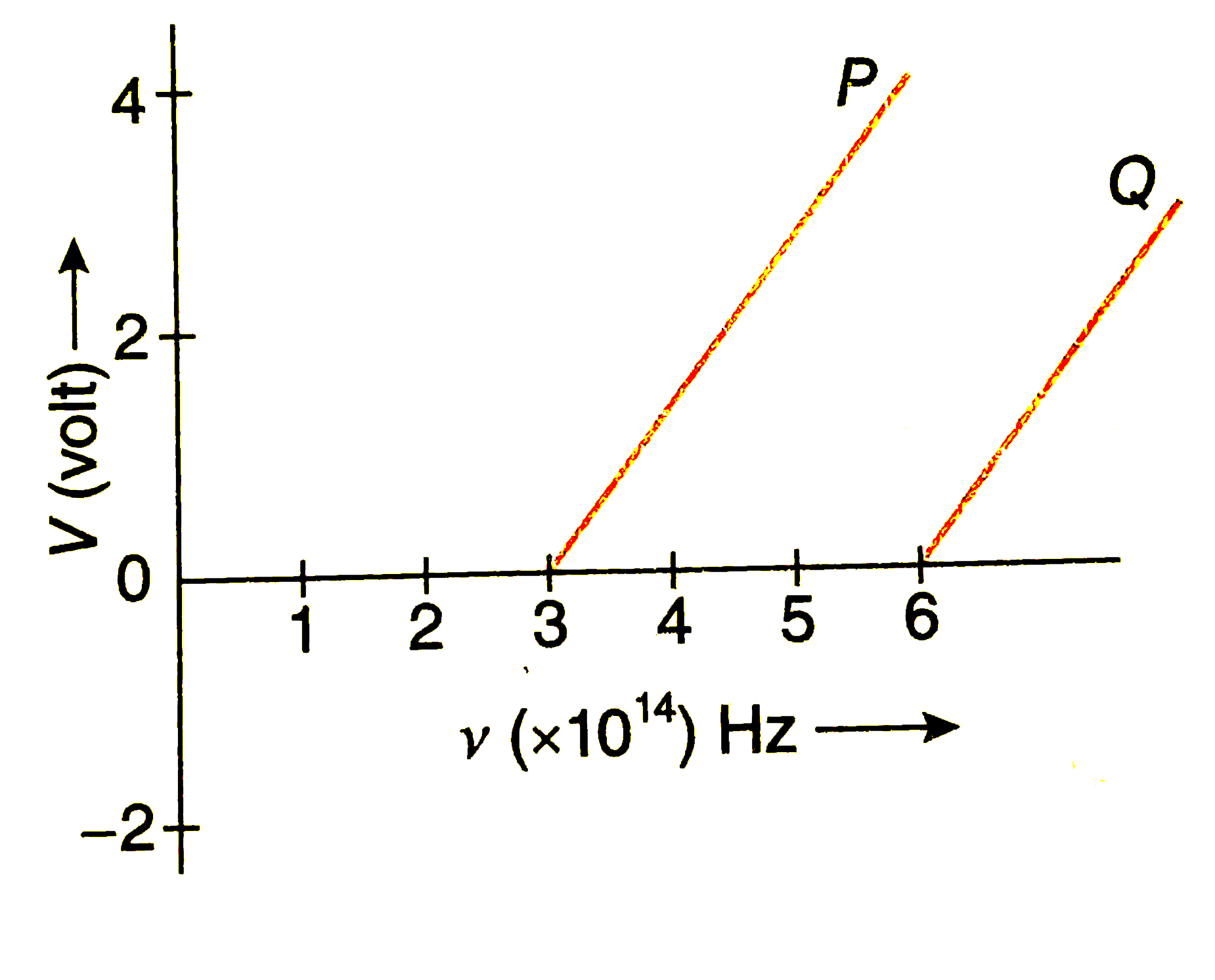
View SolutionIn the study of a photoelectric effect the graph between the stopping potential V and frequecy v of the incident radiation on two different metals P and Q shown in
Find the maximum kinetic energy of electron emitted by light of frequency `8xx106^(14) Hz` for this metal.
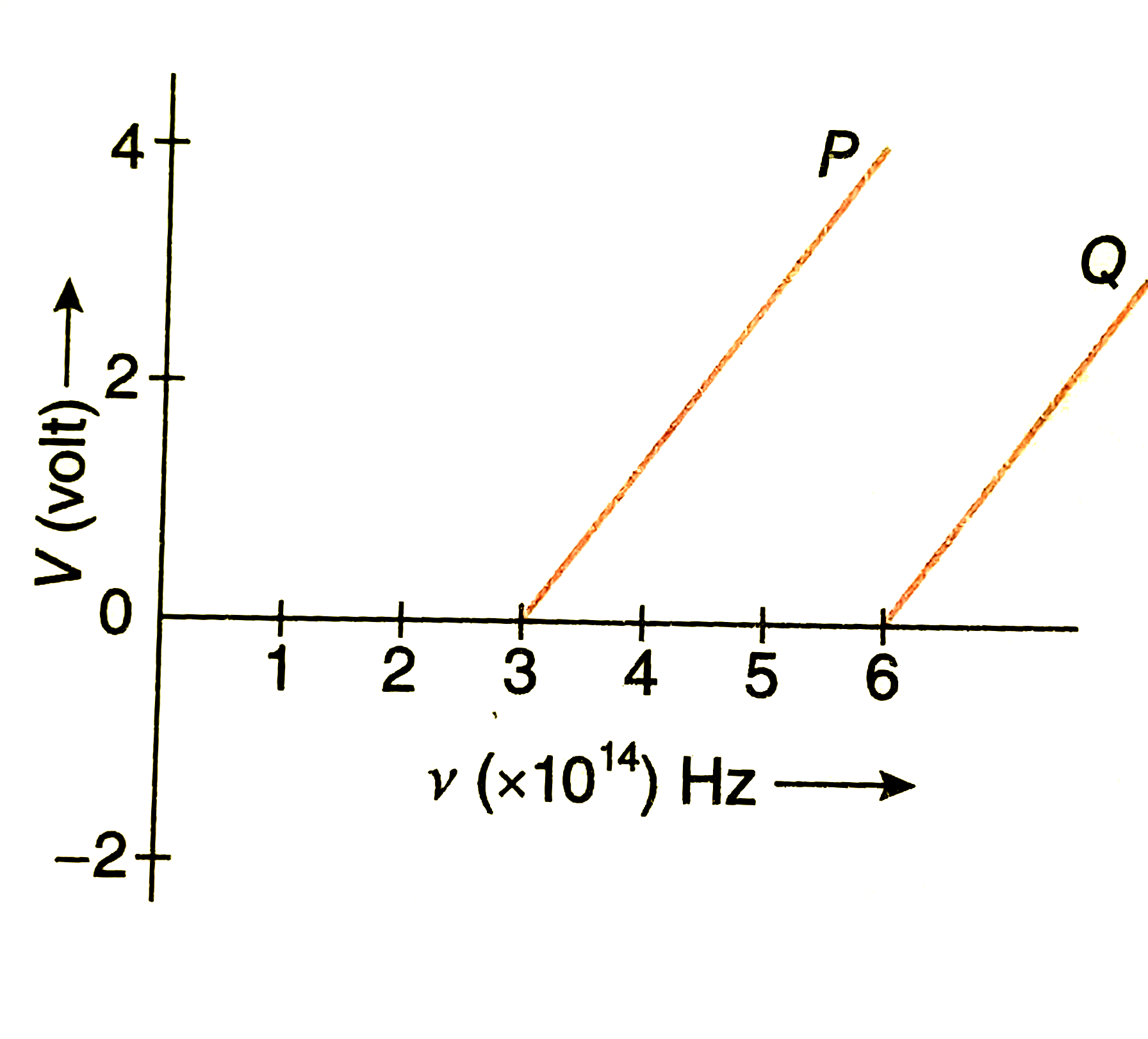
View SolutionUsing photon picture of light, show how Einstein's photoelectric equation can be established. Write two features of photoelectric effect which cannot be explained by wave theory.
View SolutionName the phenomenon which shows the quantum nature of electromagnetic radiation.
View SolutionGive reason for maximum kinetic energy of the photoelectrons is independent of the intensity of incident radiation.
View SolutionExplain giving reasons for the following:
Photoelectric current in a photocell increase with the increase in the intensity of the incident radiation.
View SolutionExplain giving reasons for the following:
The stopping potential `(V^(0))` varies linearly with the frequency (v) of the incident radiation for a given photosensitive surface with the slope remaining the same for different surfaces.
View SolutionThe following graph shows the variation of photocurrent for a photosensitive metal:
Identify the variable X on the horizontal axis.
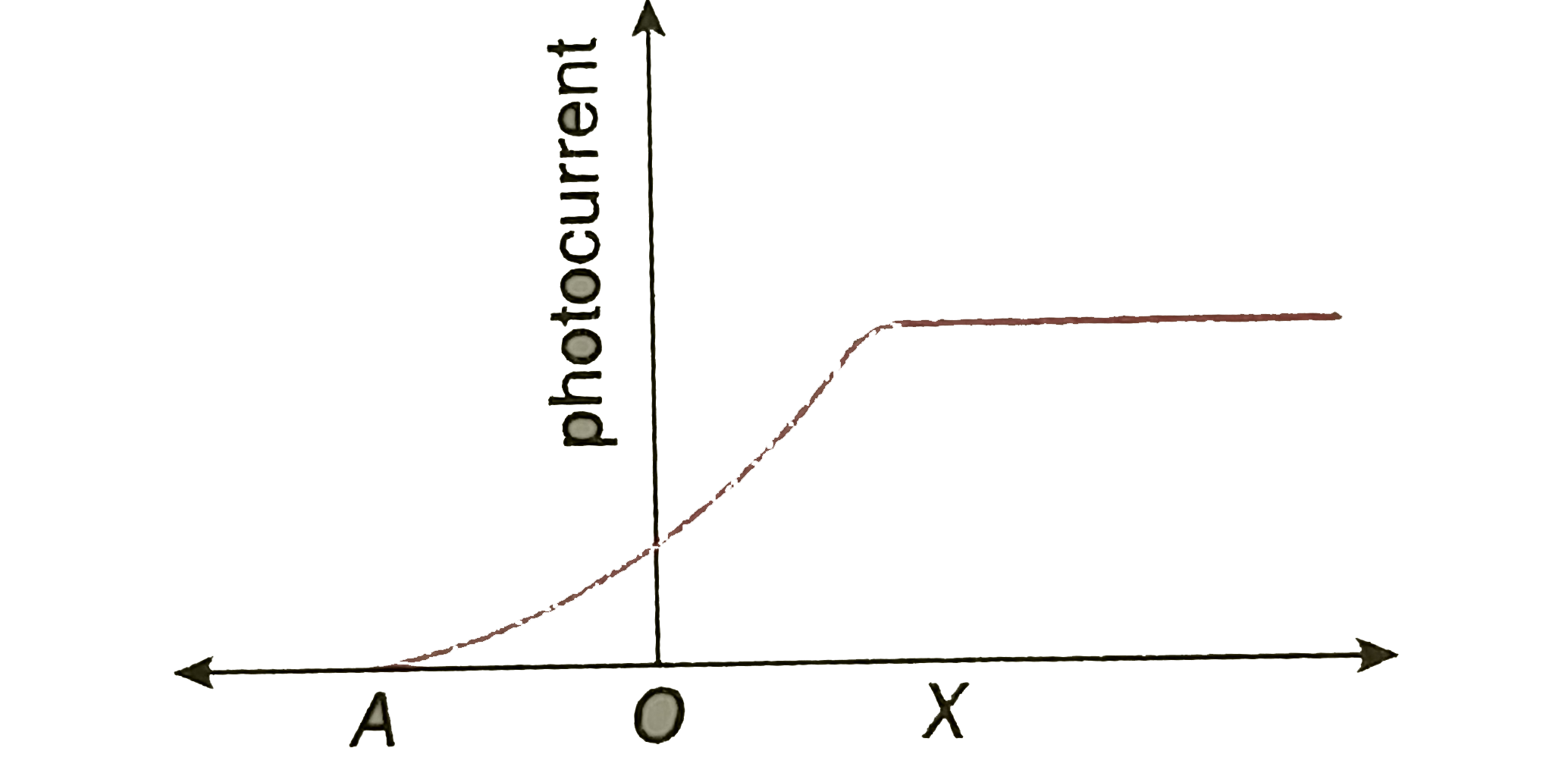
View SolutionThe following graph shows the variation of photocurrent for a photosensitive metal:
What does the point A on the horizontal axis represent?
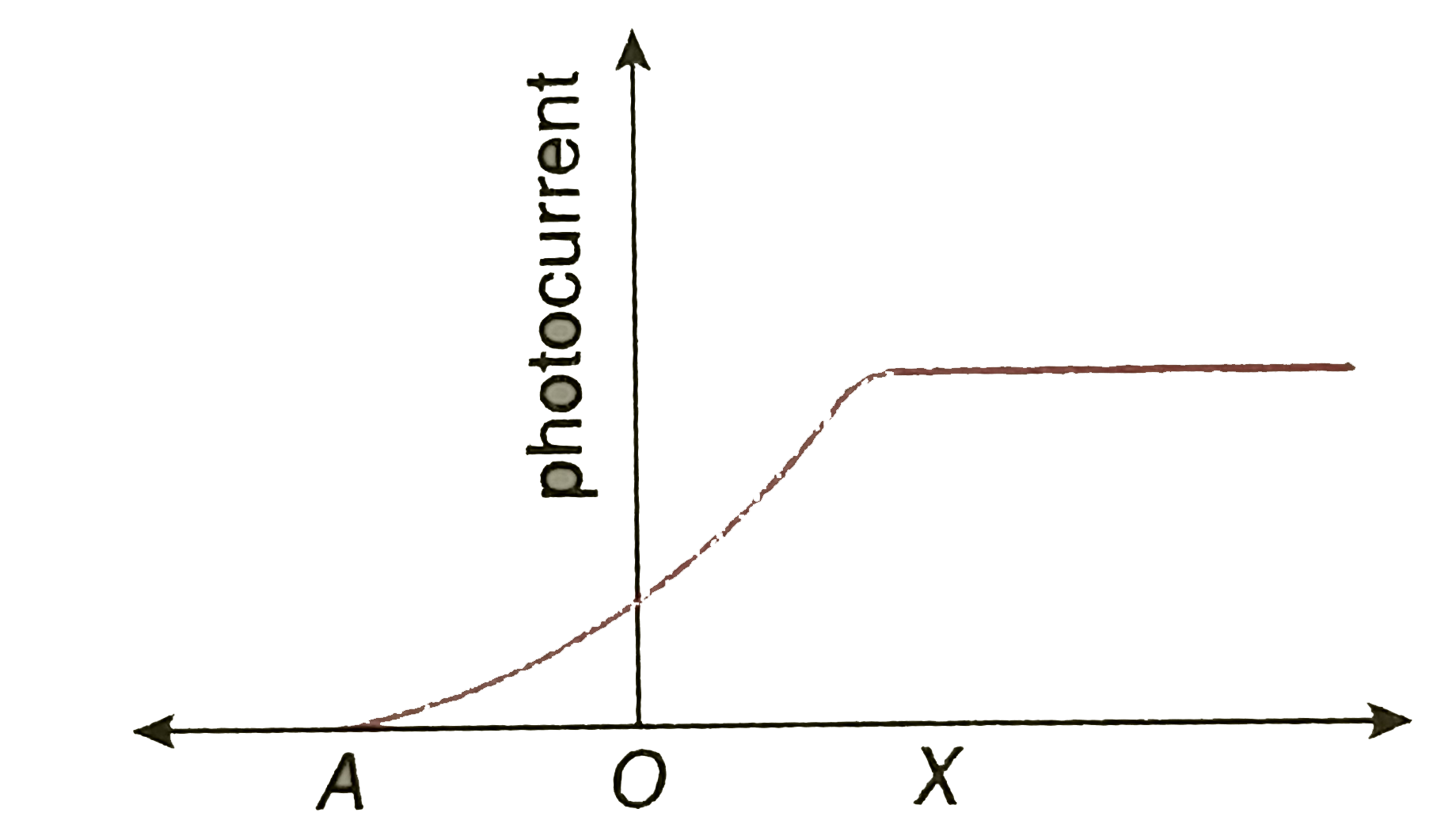
View SolutionThe following graph shows the variation of photocurrent for a photosensitive metal:
Draw this graph for three different values of frequencies of incident radiation `v_(1),v_(2) and v_(3) (v_(1) gt v_(2) gt v_(3))` for same intensity.
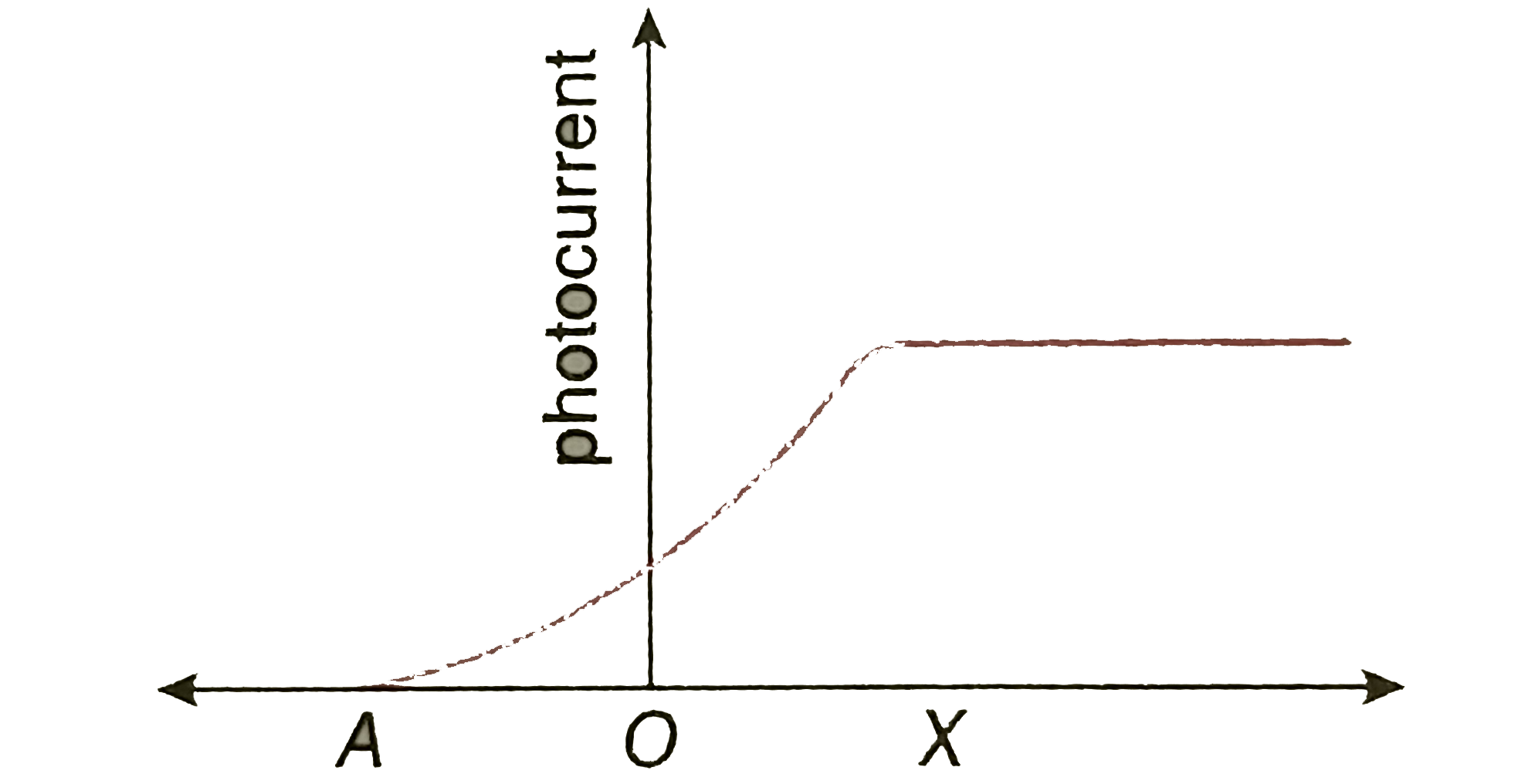
View SolutionThe following graph shows the variation of photocurrent for a photosensitive metal:
Draw this graph for three different values of intensities of incident radiation `I_(1), I_(2) and I_(3) (I_(1) gt I_(2) gt I_(3)` having same frequency.
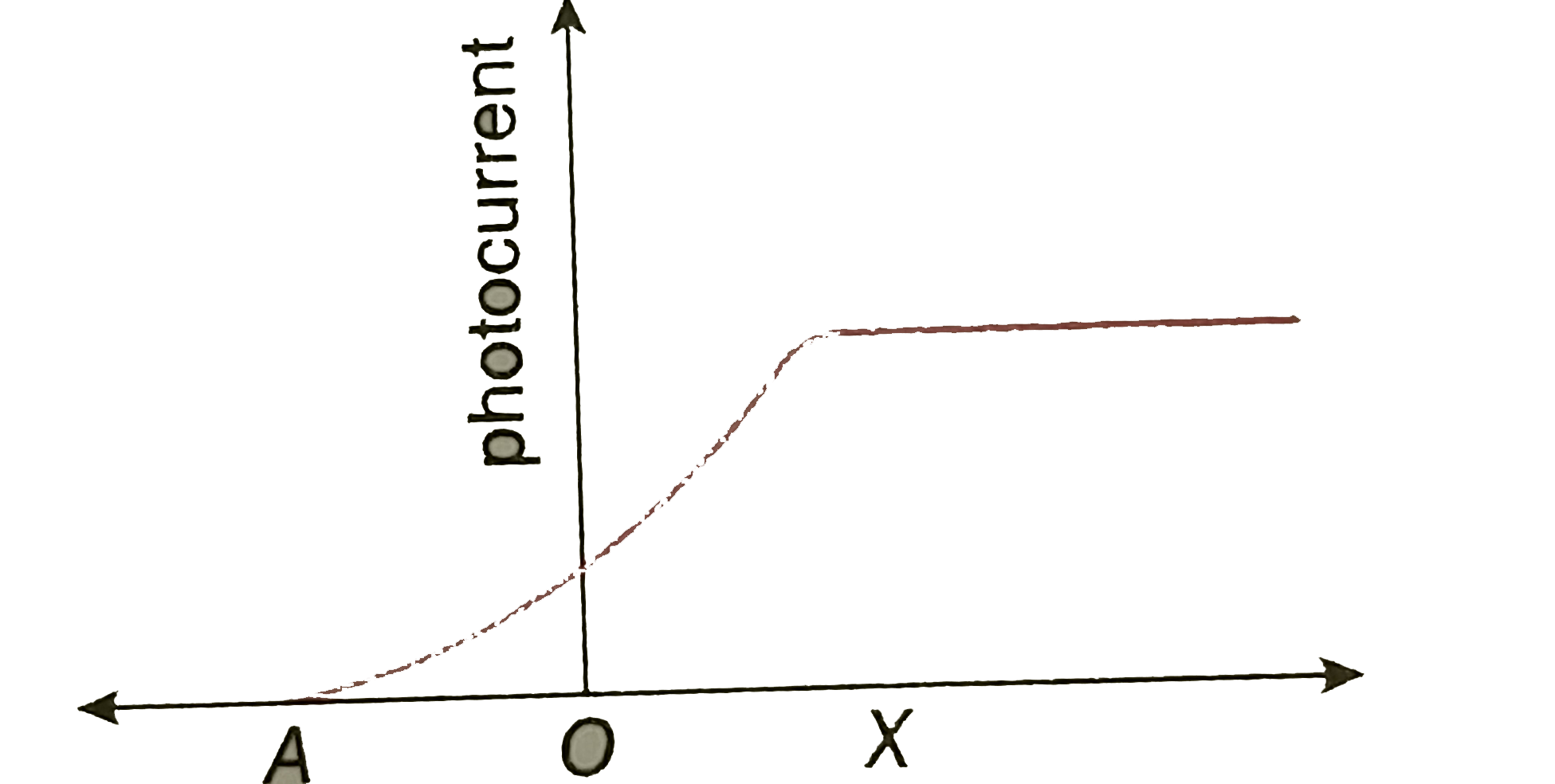
View SolutionHow does one explain the emission of electrons from a photosensitive surface with the help of Einstein's photoelectric equation?
View SolutionThe work function of the following metals are given: `Na = 2.75 eV, K = 2.3 eV, Mo = 4.17 eV and Ni = 5.15 eV`. Which of these metals will not cause photoelectric emission for radiation of wavelength `3300Å` from laser source placed 1m away from these matals? What happens if the laser source is brought nearer and placed 50cm away?
View SolutionState two important features of Einstein's photoelectric equation.
View SolutionRadiation of frequency `10^(15)Hz` is incident on two photosensitive surface P and Q. There is no photosensitive from surface P. Photoemission occurs from surface Q but photoelectrons have zero kinetic energy. Explain these observations and find the value of work function for surface Q.
View SolutionAn `alpha`-particle and a proton are accelerated through the same potential difference. Find the ratio of de Broglie wavelengths.
View SolutionDraw graphs showing variation of photoelectric current with applied voltage for two incident radiations of equal frequency and different instensities. Mark the graph for the radiation of higher instensity.
View SolutionIf light of wavelength 412.5nm is incident on each of the metals in the table, Which ones will show photoelectric emission and why?
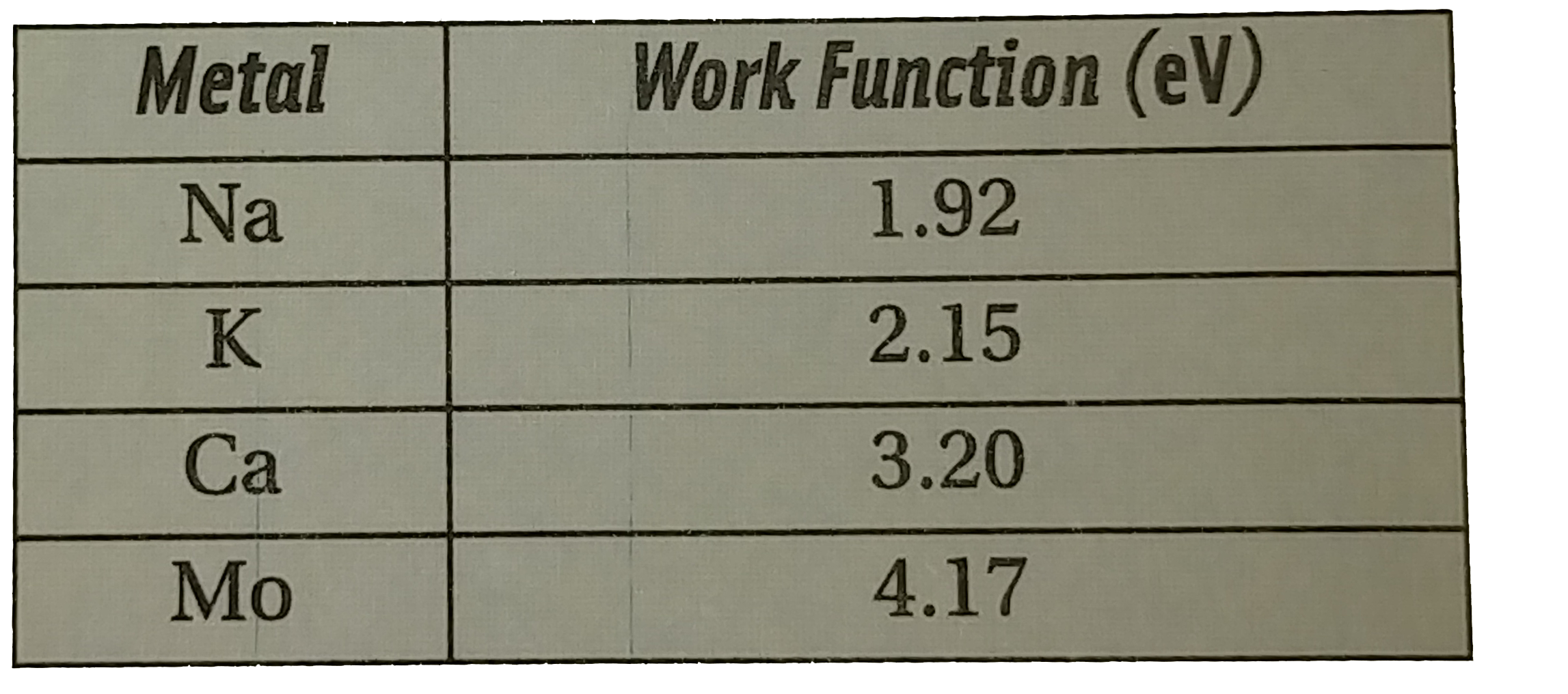
View Solution
CBSE Scanner questions and complete solutions for chapter QUANTUM THEORY of CHHAYA PHYSICS (BENGALI ENGLISH) of Class 12
All Exercises from CHHAYA PRAKASHINI Class 12 PHYSICS QUANTUM THEORY
- CBSE Scanner
- Entrance Corner (Assertion- Reason Type)
- Entrance Corner (Comprehension type)
- Entrance Corner (Integer answer type)
- Entrance Corner (Multiple Correct Answer Type)
- Examination Archive with solutions
- Example
- Exercise (Hots Numerical Problems)
- Exercise (Multiple Choice Questions)
- Exercise (Problem Set- I)
- Exercise (Problem Set- II)
- Exercise (Short Answer Type Questions- I)
- Exercise (Short Answer Type Questions- II)
- Exercise (Very Short Answer Types Questions)
- Higher Order Thinking Skill (HOTS) Questions
- NCERT Exemplar Questions with Answer HINT
- NCERT Textbook Questions with Answer Hint
- Section Related Question